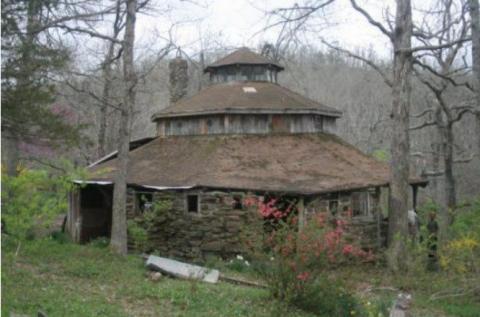
This house is where I got my first taste of an intentional community. An Intentional Community (IC) is a community built on a foundation, so to speak, of people living together and working as a team. Many times the people living in a community like this share and hold common beliefs, such as religion, spirituality, politics, science, etc. There are also communities that are full of people with different opinions, religions, and outlooks.
You could think of an intentional community as somewhat of a small independent village. Everyone looks out for one another and they also work together often as teams to complete different tasks and chores. Many of the communities that I have personally visited or know of are off of the grid, growing their own food, raising their own livestock, and many of them have different trades that help keep the community going. The idea of an IC is to become (and remain) as self-sufficient as possible! Many ICs use a form of alternative energy to produce natural power for powering the community and focus on limiting their carbon footprints as much as possible. Some communities have communal housing while others have a community building and personal dwellings.
One of the well-established communities I have yet to visit that I would love to is East Wind Community. They are located in the beautiful hills of the Missouri Ozarks. They are responsible for the delicious East Wind Nut Butters and awesome Utopian Rope Sandals. As I mentioned earlier, all communities are a little different. East Wind has what is called, a closed-door policy, which means you’re required to fill out a form to set up a visit. For people who wish to become members there is a process the community goes through with you and if you think it’s the right fit and the community thinks it’s a good fit then you’re in and a member of the community. East Wind grows their own foods and raises dairy animals in order to be self-sustaining in food; they even offer health insurance through the nut butter and sandal trades.
While becoming a community member at East Wind requires a bit of a process, there are several other communities around that offer an open-door policy which allows anyone to come visit for a couple of weeks without any forms or registry – and getting into the community may be a little easier as well. One thing I noticed is the closed-door communities seem to be a little more ordered and scheduled, while the open-door policy can result in a hectic atmosphere with people popping in and out whenever they please. Both aspects have their pros and cons – it all depends on the personal preference of people which works better for them. At the Round House, the first community I helped run for 2 years, we asked those who wished to come to get in contact with us. We would then spend some time getting to know each other, and if it seemed right we’d let them come check it out.
Fellowship For Intentional Communities (FIC) is a great website that has listings of the ICs all throughout the United States. I was amazed when I learned just how many little communities exist that most people don’t even know about. It’s almost a guarantee that everyone can find at least one community of interest. Some communities don’t last while others have been up and running since the 60s and 70s.
So Why Do People Move To Intentional Communities?
The reasons people join ICs are many and vary from person to person. Some people want to try something new and some people want the sense of a tribe. There are even communities designed specifically for elders, youths, and family. I personally enjoy helping set up communities because the more people that are self-sufficient the better (in my opinion, anyway).
Communal living isn’t for everyone. The truth is, it can be hard sometimes – but isn’t that the case with everything? Even if you aren’t ready to make the change to living in an IC, it’s worth it to schedule a visit! Many of them offer demonstrations on how to do the work they do as well as seminars. You might be amazed at what you can take away with you!








